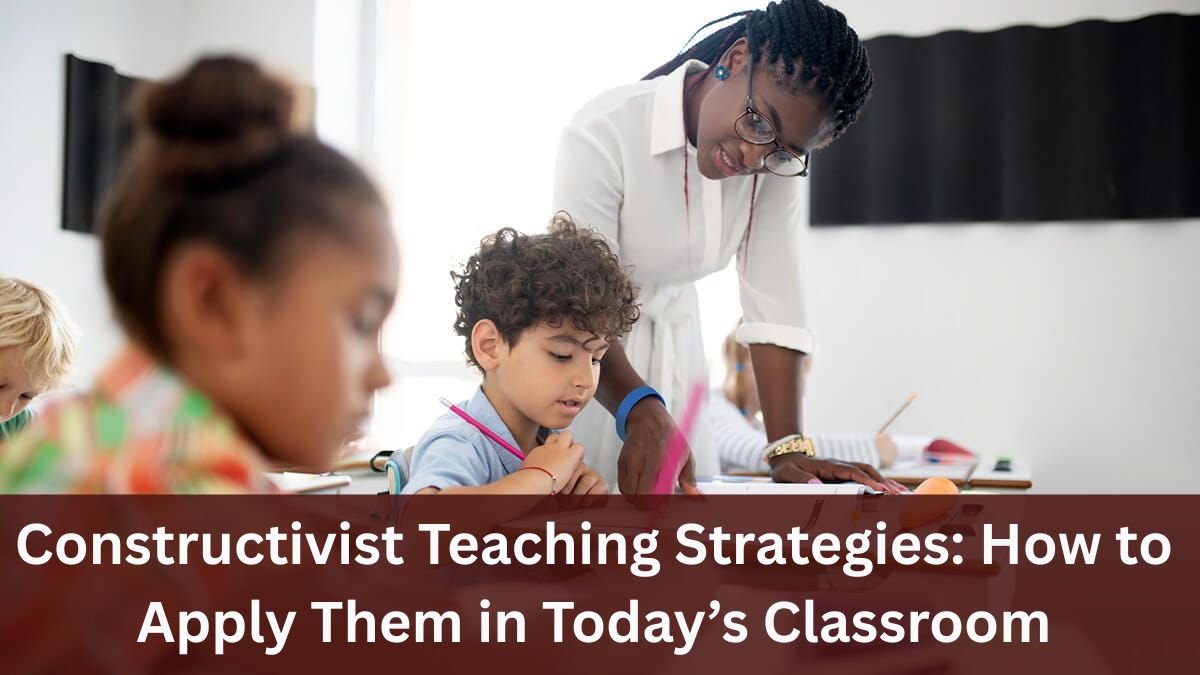I will tell and forget. I would likely not forget being taught. But when you involve me, I will learn.”
This popular saying clearly demonstrates the power of constructivist learning theory. It is a teaching method that places the student at the center of education and prioritizes his or her active participation.
In today’s modern K–12 classrooms, constructivism is becoming increasingly popular because it not only gives students information but also gives them the opportunity to understand that information and connect it with their own experiences.
In this article, we will learn in detail what constructivist teaching is, what its key principles are, and how you can implement it in your classroom.
What is constructivist teaching theory?
Constructivism is an educational theory which holds that learning is inner and active and very personal. This implies that each of the students will internalize new information in accordance with the relationship he has had on working with the previous experiences, knowledge, and beliefs.
Here, it is the task of the teacher not as a mere distributor of knowledge but it is that of a guide; it is that of one who assists in his students to have the right direction in thinking and learning.
6 Important Principles of Constructivist Teaching
In the article “Professional Learning Communities” published by Shirley M. Hord, six important principles of constructivist learning are mentioned, which are defined by Mary Burns, Marilu Menchaca and Vicki Dimock:
Every student comes with his or her own unique background:
Every student has pre-existing knowledge, experiences and beliefs that influence his or her learning process.
Individual and varied construction of knowledge:
Students construct their own knowledge through different means, resources, experiences and contexts.
Reflective and active learning:
Learning only takes place when one is doing and reflecting and not by reading or listening.
Learning is a developmental process:
Students accept, reject, or modify old ideas to form new ones.
Social interaction provides new perspectives:
Through collaboration, dialogue, and shared meanings, students learn about different viewpoints.
Learning is under the student’s internal control:
Ultimately, the decision and direction of learning is made by the student himself.
How to use constructivism in the classroom?
It is important to know how you can apply constructivist teaching theory in your classroom. Here are some practical tips
Use role-playing
When teaching history, students can play the role of historical characters. In math or science, you can also make inanimate objects come alive and ask students to play their role. This deepens their understanding.
Form small groups to solve real problems
Divide students into small groups and let them work on projects that are related to life. Such as environmental protection, solution of social problems etc.
Asking questions and learning through answers
The biggest task of a teacher in the classroom is to ask good questions. When you question the students and discuss further based on their answers, the students feel more connected.
Making learning relevant to students
Whatever you are teaching, try to connect it to the lives of the students. For example, explain mathematical formulas with examples from their everyday life.
Use raw data and primary sources
Apart from the book, use other resources such as raw data, charts, news articles, real events etc. so that students develop their own understanding.
Benefits of constructivist teaching outside the classroom too
Harrd’s article states that the benefits of constructivist teaching are not limited to the classroom only. Teachers and school leaders also follow this method and decide what they have to learn, how to learn and how to apply their knowledge.
In this process, teachers also become constructivist learners and make decisions together. This creates Professional Learning Communities in the school, which is necessary for sustainable development.
Why an MSEd degree for career advancement?
If you want to advance in the field of education and become an effective teacher, then an online Master of Science in Education (MSEd) degree can be beneficial for you.
Walden University’s online MSEd program offers 15 specializations such as:
- Mathematics
- Science
- STEM Education
- Classroom Technology
- Teacher Leadership
Educational Leadership and Administration
This degree is more than an impetus of pedagogical knowledge because it will increase your skills connected with leadership.
Walden University’s Richard W. Riley College of Education and Human Sciences is accredited by CAEP (Council for the Accreditation of Educator Preparation). This certification is an indication of high quality teacher training.
Conclusion:
In today’s rapidly changing educational world, constructivist teaching strategies are proving to be extremely useful for students. Students learn deeply only when they actively participate, solve problems, and use their thinking instead of just listening or reading.
